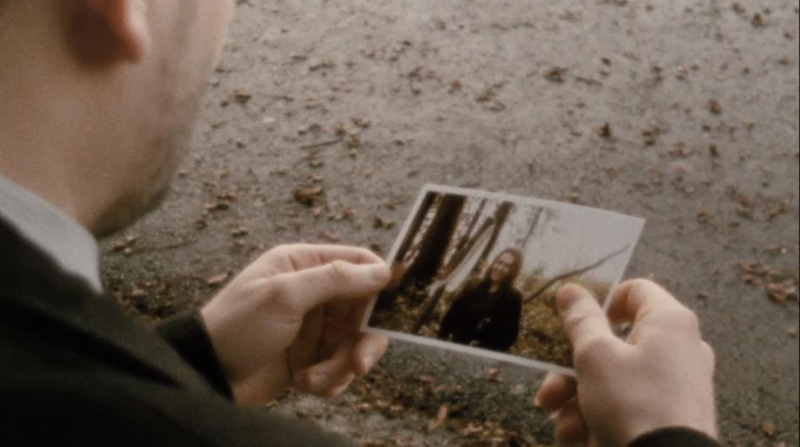Frame – The Motion Picture Of Our Lives

Frame – The Motion Picture of Our Lives
Directed by Andres Ramirez | Review by Helen Wheels
The story opens in the forest; colors are faded as if we are watching an old film. A couple enters the frame, taking pictures. The woman turns and poses, coy as her boyfriend takes aim and motions for her to smile. He snaps a photo and the movement stops, and we are looking at a photograph. Andres Ramirez, "Frame" explores the idea that each frame of a film is comparable to each moment we experience in life. The narrator tells us that each frame is composed of twenty-four individual photographs; images that play one per second (24fps), and he poses that our lives play out the same way. Each memory, much like the frame of a film, is made of individual snapshots; moments frozen in time. The narrator asks, "What then, is the frame rate of a memory?"
https://vimeo.com/235863394?from=outro-
Ramirez' eight-minute romantic short was shot using an old-style Kodak Super 8mm (reel to reel) movie camera, in combination with a contemporary digital Black Magic camera. Film and digital are interwoven, resulting in a movie that does seem to play out like an old memory. One accounting for the feel of the movie is the choppy way in which the 8MM film rolls through the image. The use of 8MM film makes it much easier to imagine multiple images flashing before our eyes, as the picture snaps and flickers. The interruption in the image does bring to mind the way that a fragment of a memory may fade in and out of one's consciousness. What is even more intriguing to me is the fact that the filmmaker has chosen to use a multi-media technique. The Kodak Super 8mm movie camera revolutionized the independent filmmaking industry back in the mid-1960's and widely used in the 1970's. But film is expensive; it must be developed, and it fades with time. These issues were resolved with digital technology. Independent filmmakers have found true freedom with the digital age. Working with film has become much more of an art form in recent years, so it's exciting to see the blending of the two mediums. That's what experimental filmmaking is all about.

Ramirez' use of voiceover instead of choosing to have the characters speak to each other on camera, was another excellent directorial choice. Though the couple speaks, the disparity between what they are saying and what we see them doing gives us the disjointed feeling of a daydream. It's as if the lovers are writing letters to each other through the veil of time. Their voices drift in and out echoing the flicker of the picture. Though they only knew each other for a short period of time, but we get the feeling that this was the love of their lives. The one that was left behind; the person whose memory only becomes more precious with time. Never truly fully fading away. In the end, Ramirez' exploration of the frame rate of a memory shows us that each moment with the ones we love are precious.
Helen Wheels is an independent filmmaker, freelance writer, and visual artist. She has produced, directed, worked as a set designer and scenic painter, and has been an assistant director on dozens of films. Wheels graduated from Shoreline College with an AAAS in Digital Film Production and is continuing toward her MFA in New Media Communications. Known for her eye to detail and advanced research skills, Wheels is currently researching historical events for her latest script and is in the process of developing her online writing business.


